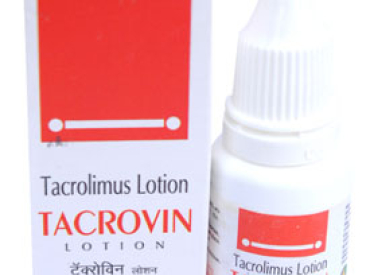Artificial Skin Grown in Labs to Cure Hair Loss and Total Baldness?
Stem-cell therapy has been championed as a possible future treatment for hair loss for some years, but the science has thus far been hampered by limitations that have kept a viable commercial product just out of reach. Now, however, research from Japan looks set to change everything.
Both the Daily Telegraph and the BBC were among the many news outlets to pick up on a story this week of some groundbreaking work undertaken by the team of Dr Takashi Tsuji at the RIKEN Centre for Developmental Biology in Kobe. In a nutshell, Dr Tsuji and his colleagues have created some of the most biologically-complete skin tissue yet developed in a lab.
Full organ grown
Whereas previous attempts at making skin in a lab have resulted in a single outer layer being created, the Japanese team’s efforts have resulted in “the full organ” (on an admittedly tiny scale), including fatty tissue and the dermis, which contains both hair follicles and sweat glands.
The new research, which was published in the Science Advances medical journal, most readily lends itself to possible future applications in the fields of skin burns and, of course, hair loss. In the team’s tests, in fact, they were successfully able to grow new hair in bald mice.
Researchers transformed cells taken from mouse gums into what they describe as 'stem cell-like iPS cells' using chemicals. These cells were then grown in culture until a 3D cluster of cells known as an embryoid body (EB) formed.
Interestingly, the Wnt pathway was crucial to this development, with the iPS cells being transformed into EBs using the signalling molecule, Wnt10b before being transferred into the immune-deficient test mice where the cells developed into differentiated tissue.
Researchers note in the press release regarding their findings, that the role of Wnt10b was 'key' and 'resulted in a larger number of hair follicles, making the bioengineered tissue closer to natural tissue'.
The Wnt pathway was discovered to have the potential to promote hair regeneration in a 2013 study by the University of Pennsylvania who announced further findings into how this affected hair growth - and potentially hair loss - in a 2014 study. More recently, the potential stem cell-based male pattern hair loss treatment, Samumed SM04554, which is currently undergoing clinical trials, exploits the Wnt pathway to treat even severe cases of hereditary baldness.
Breakthrough for baldness
Skin burns and baldness also dovetail in cases of Cicatricial or Scarring Alopecia, a form of hair loss that arises when scarring from actual burns, radiation or other reasons, including a variety of conditions which lead to severe inflammation cause irreparable damage to the hair follicles. Treatment options for Scarring Alopecia are currently extremely limited with many cases being incurable.
"Up until now, artificial skin development has been hampered by the fact that the skin lacked the important organs, such as hair follicles and glands, which allow the skin to play its important role in regulation,” said Dr Takashi Tsuji. “With this new technique, we have successfully grown skin that replicates the function of normal tissue. Our study contributes to the development of bioengineering technologies that will enable future regenerative therapies for patients with burns, scars, and alopecia.”
The Telegraph correctly reports that, at present, people who have lost their hair to scarring can sometimes have hair transplants from other parts of the head which still have follicles. They go on to say that the new, Japanese, procedure, would change everything, with only stem cells needed to kick-start the new skin growth.
What is perhaps more exciting is that the new therapy once perfected could also be suitable for a far greater number of people than is the case for current hair restoration surgery.
In many instances of male pattern baldness people’s shedding is “too far gone” for donor hair taken from their own scalp to provide sufficient all-over coverage, or for those with scarring alopecia, the damage to their scalp may be too severe for donor hair to be suitable or for the required operations to take place.
The BBC cautiously notes that it could be 5-10 years before we see bioengineered skin perfected for use on humans. Thus far, the technique has only been used on mice, with stem cells grown from cells taken from the mouse’s gums. But the results are astounding. The Telegraph states that the Japanese team implanted the manufactured skin into the mice from which the cells were taken and that “the tissues formed proper connections with other organ systems such as nerves and muscle fibers without any rejection problems.”
Incidentally, if you’re wondering why the new mouse skin looks like something from a Marvel comic in the images, it’s because it was made fluorescent so that it could easily be seen.
 Magnificent potential
Magnificent potential
Last summer, Belgravia Managing Director Jonny Harris told the Daily Mail that he thought stem cell technology may well be able to solve the issue of hair loss in both men and women by 2020. He also saw magnificent potential in DNA screening, explaining that the ability to ascertain a tendency for genetic hair loss in individuals could mean that proven medical treatments could taken before hair began falling out, thus effectively stopping any potential thinning in its tracks. Testing of this nature, he predicted, could also be widespread in the future.
The year 2020 is still a while away but, for now, there are effective hair loss treatments for men and women with a variety of conditions, including the most common: pattern hair loss and alopecia areata.
Anyone concerned that they are losing their hair or feel it is thinning more than normal should consult an expert as soon as possible for a professional diagnosis. Once the cause, level and pattern of shedding has been ascertained, a comprehensive regrowth plan featuring personalised treatment recommendations such as high strength minoxidil and complementary hair growth boosters to help maximise your hair's potential.

The Belgravia Centre
The Belgravia Centre is a world-renowned group of a hair loss clinic in Central London, UK. If you are worried about hair loss you can arrange a free consultation with a hair loss expert or complete our Online Consultation from anywhere in the world for home-use treatment.
View our Hair Loss Success Stories, which includes the world's largest gallery of hair growth photos and demonstrates the level of success that so many of Belgravia's patients achieve.

